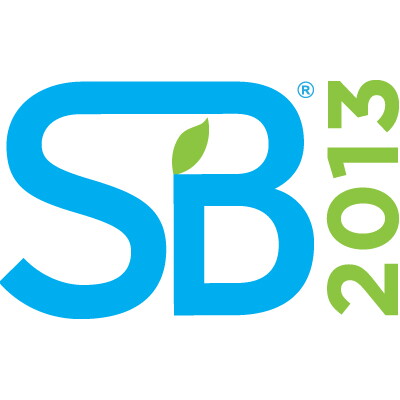What is a "meaningful brand"?

Following up on our recent post from the New Metrics in Sustainable Business conference, Logan Yonavjak (MF '15) and Marissa Galizia (MBA/MEM '15) bring to the CBEY blog their perspective on recent studies of what goes into making a brand meaningful.

Which brands in your life really hold meaning for you? Which ones have a positive impact on you, your community, and the natural world? According to recent research performed by Havas Media Group, the majority of people surveyed globally wouldn’t care if 73% of brands disappeared tomorrow. But, this begs the question, which brands are consumers meaningfully connecting with and why?
To attempt to answer these questions, the Havas Media Group, one of the leading global communications and marketing groups (clients include McDonalds, Fidelity Investments, and CocaCola) created the Meaningful Brands Index (MBi). The MBi is the first-of-its-kind global analytical framework to assess the connection between human quality of life and well-being with brands at a business level.
 According to Amy du Pon, Global Head of Data Insights at Havas Media Group, trust has largely been broken between people and many brands. “Brands are continuing to encourage people to buy more stuff, in keeping with the industrial era model. But in today’s relationship economy people’s expectations are changing,” explains Amy.
According to Amy du Pon, Global Head of Data Insights at Havas Media Group, trust has largely been broken between people and many brands. “Brands are continuing to encourage people to buy more stuff, in keeping with the industrial era model. But in today’s relationship economy people’s expectations are changing,” explains Amy.
Amy spoke several times at the Sustainable Brands (R) New Metrics for Sustainable Business conference in Philadelphia on Sept. 24-25. This conference was geared towards fostering in-depth discussion around how the business of the 21st century creates, quantifies and manages the value it delivers through the metrics it adopts.
A big theme at the conference was the evolution of Corporate Social Responsibility; moving companies beyond just producing reports through their respective Sustainability Offices to embedding sustainability into the balance sheet and into every aspect of operations. Related to this is consumer perception of brands. As citizens become more globally aware and socially conscious, this changes the dynamic between people and their brands. Thus, engaging with clients and consumers in a more meaningful way is one of the critical steps in the evolution of the new CSR.
The data
The MBi relies solely on consumers’ perceptions of brands and their impacts on promoting 12 different areas of personal and collective well-being including social, emotional, financial, physical, community, government, natural and environmental. To create the index, Havas has surveyed over 134,000 customers in 23 countries about 700 different brands. Here’s a YouTube video that outlines the Meaningful Brands Index research.
Which brand wins the distinction of the “most meaningful brand”? You may have guessed it: Google. Technology brands seem to be the ones making the most significant contributions. Samsung and Microsoft hold the second and third spots. Nestle is the first consumer products company on the list at number four.
The results show a direct relationship between a brand’s MBi and the level of consumer attachment. The data also demonstrates that being a Meaningful Brand seems to have an impact on the bottom line. The results from 2013 statistically demonstrate that Meaningful Brands outperform the stock market by 120%.
The data supports Amy’s philosophy that “brands which are able to realize and improve a wide spectrum of people’s well-being in a tangible, concrete and authentic way are rewarded with more attachment, loyalty and stronger business performance.” But what does this mean for how brands should approach environmental sustainability?
Evolution of “meaningful brands” and implications for environmental sustainability
Ultimately, Havas’ data is beginning to demonstrate that people really care that these brands exist to the extent that they are making a significant contribution to their lives and communities, not necessarily because of how many units of “stuff” they get from the brand.
Companies need to be asking themselves: does every dollar of stuff my company is producing yield real human benefits or not? “It’s not about more, bigger, faster, cheaper, now…it’s about smarter, fitter, closer, wiser, tougher” explains Umair Haque, Economist, Author, HBR blogger and Havas Media Labs Director.
The MBi is a great indicator that we are moving beyond an economy of “stuff”, measured by GDP, to one that measures positive, meaningful outcomes for human well-being. However, the MBi is currently only directly measuring social indicators, and environmental indicators to the extent that brands incentivize people to change their behaviors (e.g. to recycle) or influence wider social behaviors (e.g. reducing water consumption).
Though attention to environmental sustainability might have contributed to some of the surveyed customers perceptions of these “meaningful brands,” and led to some behavior changes (for companies and consumers), the top ten most meaningful brands list may not necessarily overlap with the most sustainable brands list (which doesn’t yet exist) in terms of tangible impacts that companies are having on natural resource consumption or the provision of ecosystem services.
On the one hand, perception of environmental sustainability can increase people’s connection with a brand, and hopefully drive businesses to think about ways to positively impact natural ecosystems. Sustainability leaders can also use this information to more meaningfully increase people’s connection to the natural world.
On the other hand, it could just be the companies that advertise more effectively that get the higher perception of environmental sustainability, and this could turn into a focus on marketing, not actual outcomes. While sustainability marketing is important for companies to highlight sustainability efforts, it is also important for companies’ to measure greenhouse gas emissions, water consumption, and other natural resource outcomes so that they can truly become a sustainable brand, not just have people perceive them as one.
Note: This feature is not an offer of securities nor a solicitation in any investment.